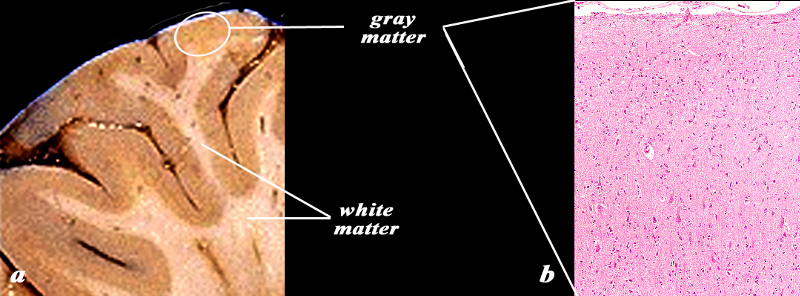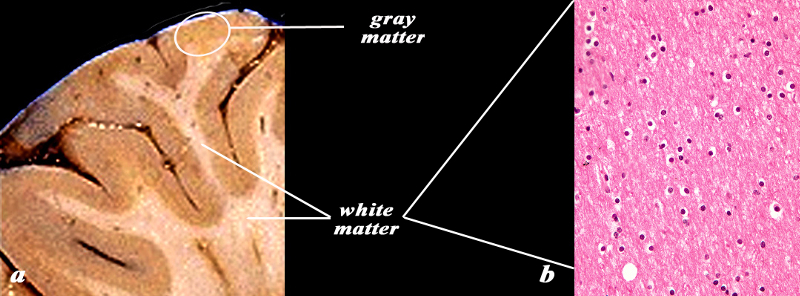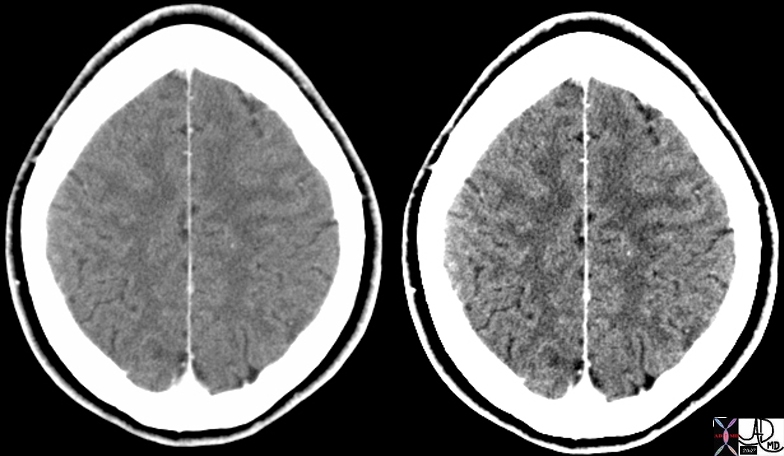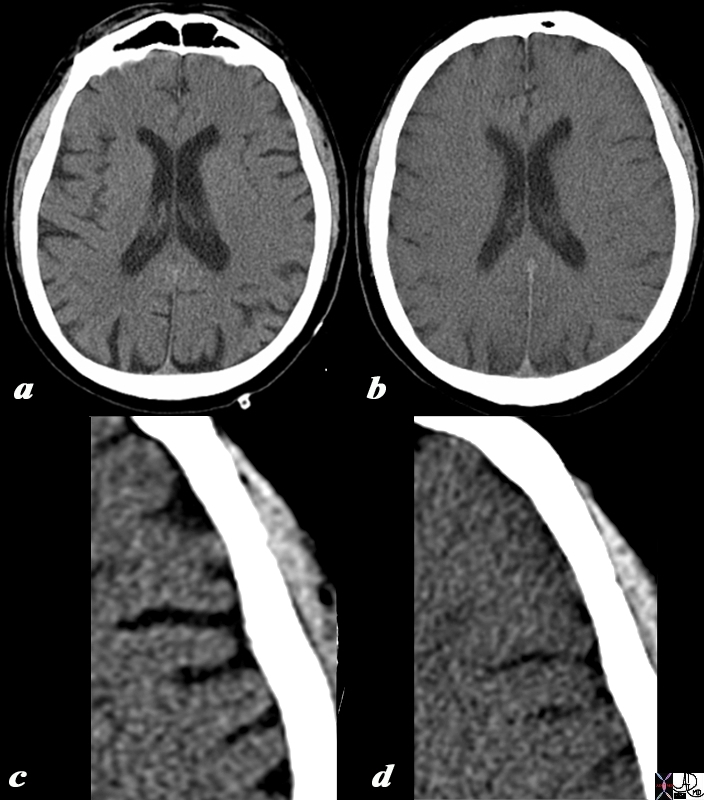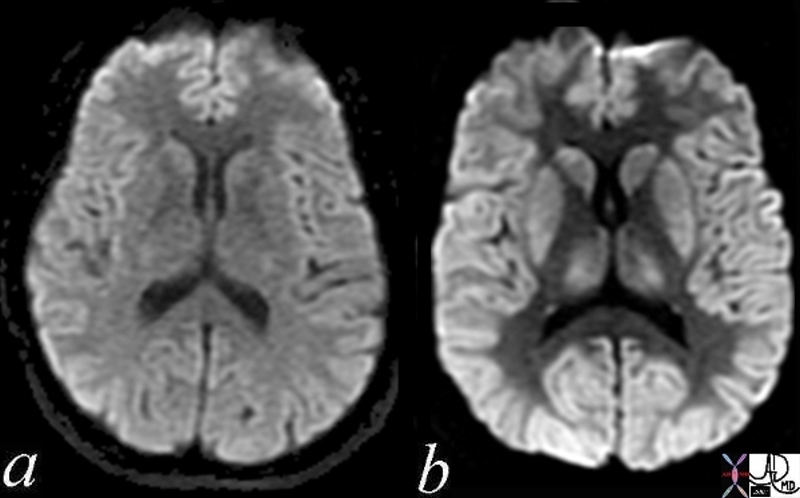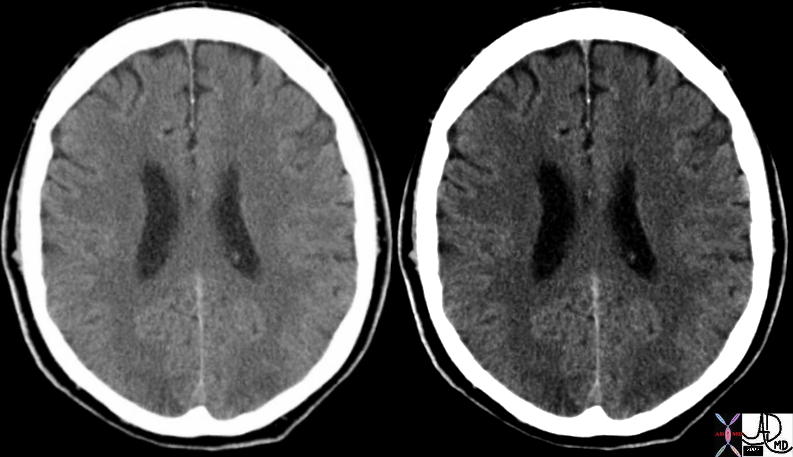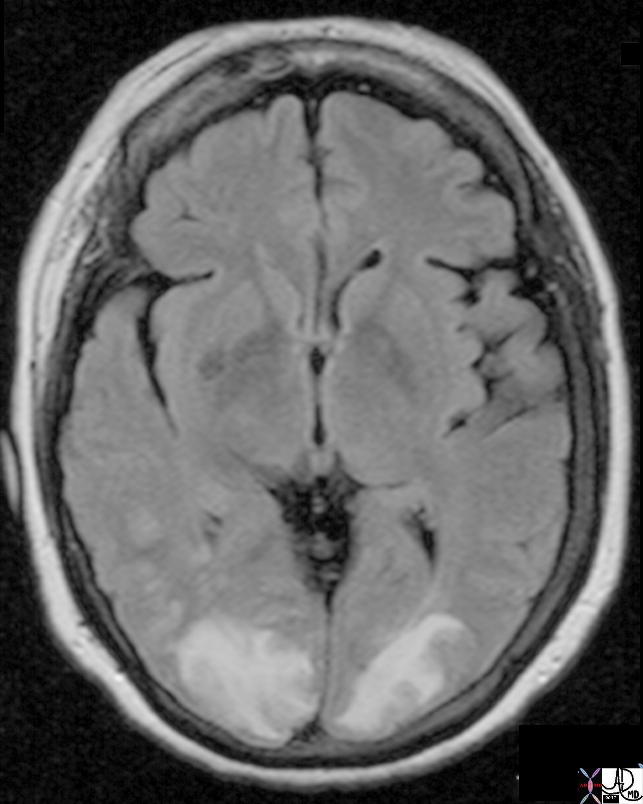The Common Vein Copyright 2009
Introduction
The gray matter corresponds to those areas in the central nervous system of gray color. The human cerebral cortex is 2-4 mm (0.08-0.16 inches) thick.. It is predominantly composed of neuronal cell bodies and dendrites devoid of myelin (myelin is white – in its absence, neural tissue appears gray) together with glial cells. In the spinal cord is evident in the center extending to the side, in a butterfly-shaped fashion. In the brain it occupies the external layer, with the exception of the internal basal ganglia that serve as “relay stations”. In essence, it is the macroscopic appearance of what are nuclei and cortical areas.
At the top of a convolution, it is thicker than at the bottom, having a maximum thickness of about 4 mm (in the superior parts of the motor area), while the minimum of about 1.25 mm may be observed in the region of the occipital pole.
Microscopically, according to the region we are describing, the gray matter varies its composition in terms of types of neurons. In the spinal cord, the gray matter is divided in two functionally distinct regions, the dorsal (sensory portion) and ventral horns (motor portion). In the brain, as mentioned, the architecture is different, having a more complex organization.
|
Histology 10X of the Gray Matter |
|
The image shows a gross specimen photographed to show the gyral pattern and the distinction between the rim of gray matter (light brown) and the white matter (cream colored) (a). The microsopic section (b), shows the histological equivalent of the gray matter as might be seen in the white circle consisting of a superficial layer of meninges and the deep layer of gray matter . A variety of cell types and sizes can be distinguished evn at this microscopic level. Image Courtesy of Thomas W.Smith, MD; Department of Pathology, University of Massachusetts Medical School. 97630bc.8 |
White Matter
|
Histology of the White Matter (40X) |
|
The image shows a gross specimen (a) photographed to show the gyral pattern and the distinction between the rim of gray matter (light brown) and the white matter (cream colored). The microscopic section (b) is 40X magnified, and shows the histological equivalent of the white matter consisting mainly of oligodendrocytes characterized by cells with a white halo. No neurons are present Image Courtesy of Thomas W.Smith, MD; Department of Pathology, University of Massachusetts Medical School. 97630bc02.8 |
Its organization can be classified into two different types, according to the number of cell layers. These are the neocortex, which has at least six layers, and the allocortex. The different layers have different thicknesses according to the function of the cortex in that area of the brain.
Function
The gray matter, lacking myelin, is not capable of rapid transmission of nerve impulses. Its main function is information processing, ie, reasoning. The amount of this substance is often seen as directly proportional to the intelligence of a living being. Dolphins actually have more gray matter than we have, so this may not be true.
The allocortex is morphologically distinct and simpler in function compared to the neocortex, having homologous structures in most animals. It is responsible for olfaction and aspects of learning and memory.
In the neocortex, the different layers are more developed in certain areas of the brain compared to others. Each layer serves different functions. Thus, based on layering patterns, sizes and morphology of the composing neurons, Korbinian Brodmann identified 52 different areas of the cerebral cortex. Each of these areas has a distinct and unique function. Together, the result is a sophisticated behavior, typical of humans.
|
Brodmann’s areas. |
||||||||||||||||||||||||||||||||||||||||||||||||||||||||||||||||||||||||||||||||||||||||||||||||||||||||||||||||||||||||
|
||||||||||||||||||||||||||||||||||||||||||||||||||||||||||||||||||||||||||||||||||||||||||||||||||||||||||||||||||||||||
|
Normal Head CT Distinction Between Gray and White Matter |
|
The two images are form the same patient and the routine settings are shown on the left and the windows have been further narrowed on the right image in order to accentuate the difference between the gray and white matter. CT shows the white matter to be darker (blacker) than the gray matter which is a thin mantle of tissue on the edge of the brain. The ability to distinguish gray matter from white matter is a far easier task on MRI. Courtesy Ashley Davidoff MD copyright 2010 48757c01 |
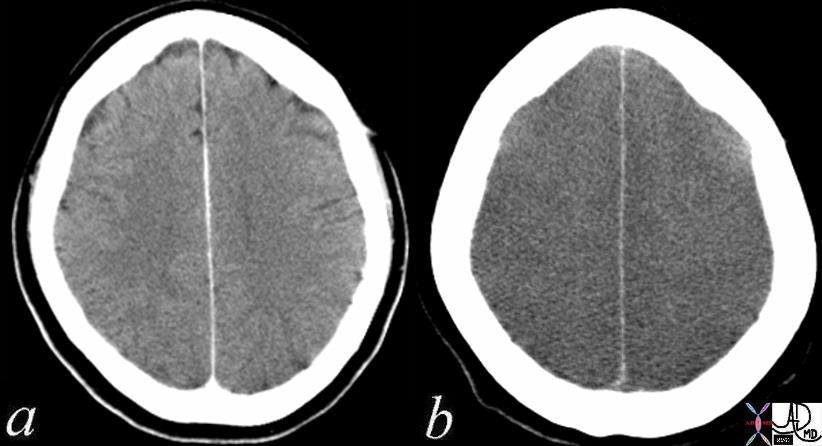
Normal – 4 months Prior and Folllowing Cardiopulmonary Arrest Loss of Gray White Differentiation |
|
The CT is from a 52 year old female who had a CT 4 months prior tto a cardiac arrest (a) showing subtle but definite difference in the attenuation difference between gray and white matter. After the cardiac arrest, she suffered anoxic injury to the brain resulting in extensive and global swelling of the brain and both gray and white matter have the same attenuation. The distinction between the two cannot be made and this finding is consistent with global anoxic injury. After 10-15 seconds of anoxia from cardiac arrest, loss of conciousness occurs and after 5 minutes of arrest, irreversible brain injury occurs. The gray matter of the brain, particularly the frontal lobes have highest metabolic needs. The occipital, parietal, and temporal lobes and basal ganglia and cerebellum have lesser needs. The brainstem has the lowest oxygen needs Courtesy Ashley Davidoff MD Copyright 2010 70134c01 |
|
Normal (a,c) and 3 Days later after a Cardiac Arrest (b) |
|
The CT is from a 57 year old male who had a CT 3 days prior (a,c) to a cardiac arrest (b,d) showing subtle but definite difference in the attenuation difference between gray and white matter. After the cardiac arrest, he suffered anoxic injury to the brain resulting in extensive and global swelling of the brain and both gray and white matter have the same attenuation. The distinction between the two cannot be made and this finding is consistent with global anoxic injury and edema. The windows of (c) and (d) have been narrowed in order to accentuate the gray-white matter interface in c and show the graying out of the interface when the brain is edematous. c After 10-15 seconds of anoxia from cardiac arrest, loss of consciousness occurs and after 5 minutes of arrest, irreversible brain injury occurs. The gray matter of the brain, particularly the frontal lobes have highest metabolic needs. The occipital, parietal, and temporal lobes and basal ganglia and cerebellum have lesser needs. The brainstem has the lowest oxygen needs. Image Courtesy Ashley Davidoff MD Copyright 2010 All rights reserved 90637c02.8L01 |
|
DWI – Normal (a) and Global Ischemia (b) |
|
The two images represent a diffusion weighted MRI sequence which measures Brownian motion of molecules. Image 9a) is normal. In acute infarction there is restricted Brownian motion of the affected area and the image can be manipulated to present this as a bright region. In this case the acute infarction or ischemia (b) is diffuse so the whole brain is relatively bright so that the white matter appears relatively dark (a) Courtesy Ashley Davidoff MD Copyright 2010 All rights reserved 49433c02.800 |
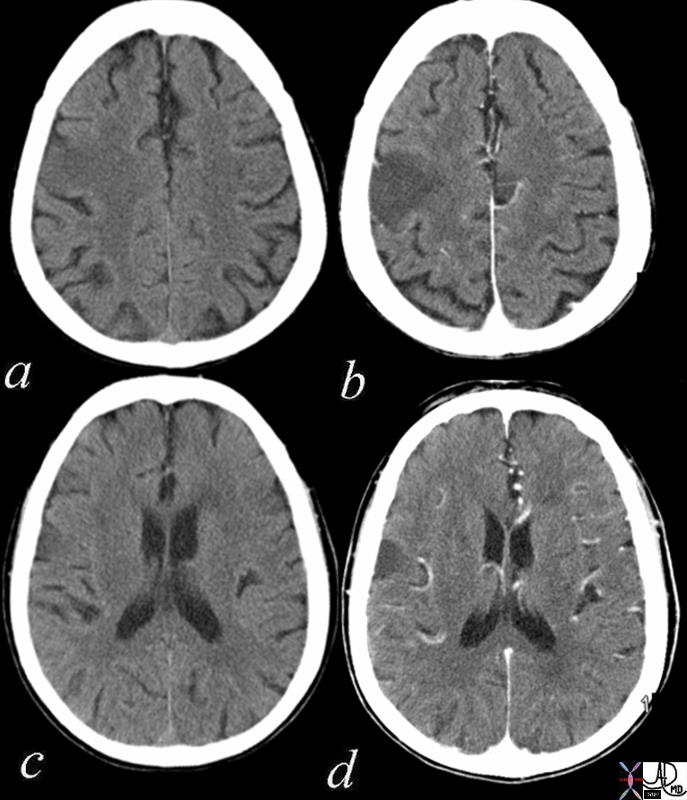
Acute Infarction Right Fronto-parietal Lobe |
|
The axial CT scan through the ventricles is from a 73 year old female with acute left sided weakness and slurred speech. Images a nd c are without contrast and images b and d are following intravenous contrast. In the right frontoparietal region within the location of the pre and post central gyrus there is a focal hypodense region, accentuated in the contrast study, with loss of the gray white differentiation, consistent with an acute infarction in the parietal lobe. Courtesy Ashley Davidoff MD Copyright 2010 71253c01 |
|
Subtle Occipital Lobe Loss of Gray White Differentiation |
|
This hypertensive patient presents with visual disturbance and the axial CT scan shows subtle changes in the occipital lobe characterised by vague low density regions. There is loss of gray-white matter differentiation consistent with acute ischemia. These findings are consistent with acute hypertensive encephalopathy Courtesyt Ashley Davidoff MD 73422 |
|
FLAIR Hyperintensity in the Occipital Lobes |
|
This hypertensive patient presents with visual disturbance and the MRI using a FLAIR sequence shows obvious FLAIR hyperintensity in the occipital lobes and extending into the parietal lobes. These findings are consistent with acute hypertensive encephalopathy and ischemia of the occipital lobes characteristic of acute hypertensive encephalopathy Courtesy Ashley Davidoff MD Copyright 2010 All rights reserved 73422 |

